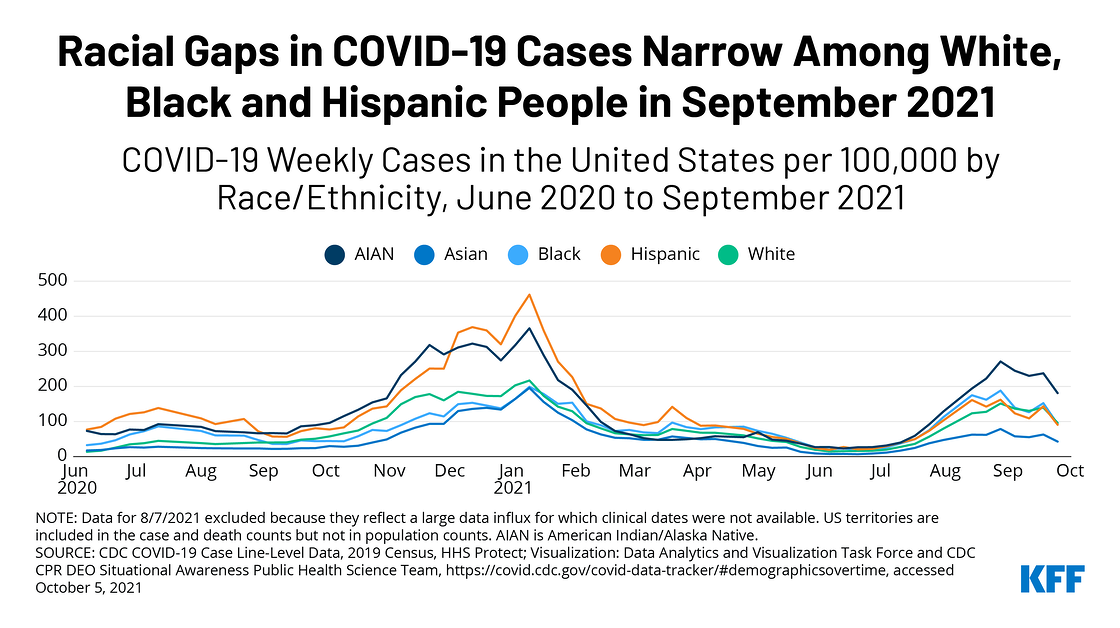
The independent source for health policy research, polling, and news.
As the COVID-19 Pandemic Evolves, Disparities in Cases and Deaths for Black and Hispanic People Have Narrowed
Despite Recent Shift, Underlying Social and Economic Inequities that Put People of Color at Increased Risk Earlier in the Pandemic Remain
As the COVID-19 pandemic’s focus shifts from urban to rural areas, and more people resume public activities, a new KFF analysis of case and death data from the Centers for Disease Control and Prevention reveals narrower disparities affecting Black and Hispanic people compared to White people now than earlier in the pandemic.
The analysis examines trends in cases and deaths since early in the pandemic where race and ethnicity is known. While cumulative data show that Black, Hispanic and American Indian and Alaska Native people have been disproportional impacted overall, recent data show much closer rates of new cases and deaths among White, Black and Hispanic people. In contrast, American Indian and Alaska Native people are experiencing higher rates of new cases than other groups.

Some factors likely contributing to these shifts:
- COVID-19 vaccinations have increased protections and reduced illness and death across all racial and ethnic groups. Vaccination rates among Black and Hispanic adults also are approaching parity with the rate among White adults. That’s a significant shift from earlier this year, when vaccination rates lagged among Black and Hispanic adults in part due to access barriers. The latest KFF COVID-19 Vaccine Monitor report now shows the uninsured, Republicans, rural residents and White Evangelical Christians as the least vaccinated groups.
- The pandemic initially hit hardest in urban areas, which often include a racially diverse population, but is increasingly hitting more rural areas, which have higher concentrations of White and American Indian and Alaskan Native people.
- Earlier in the pandemic, when most states implemented social distancing measures and limited public activities, risk of exposure and infection was highest for essential workers, who continued to work outside their home and are disproportionately people of color.
The analysis notes that while disparities have narrowed, many of the underlying structural inequities in health and health care and social and economic factors that placed people of color at increased risk early in the pandemic remain. They may remain at risk as the pandemic continues to evolve or if future health threats emerge.